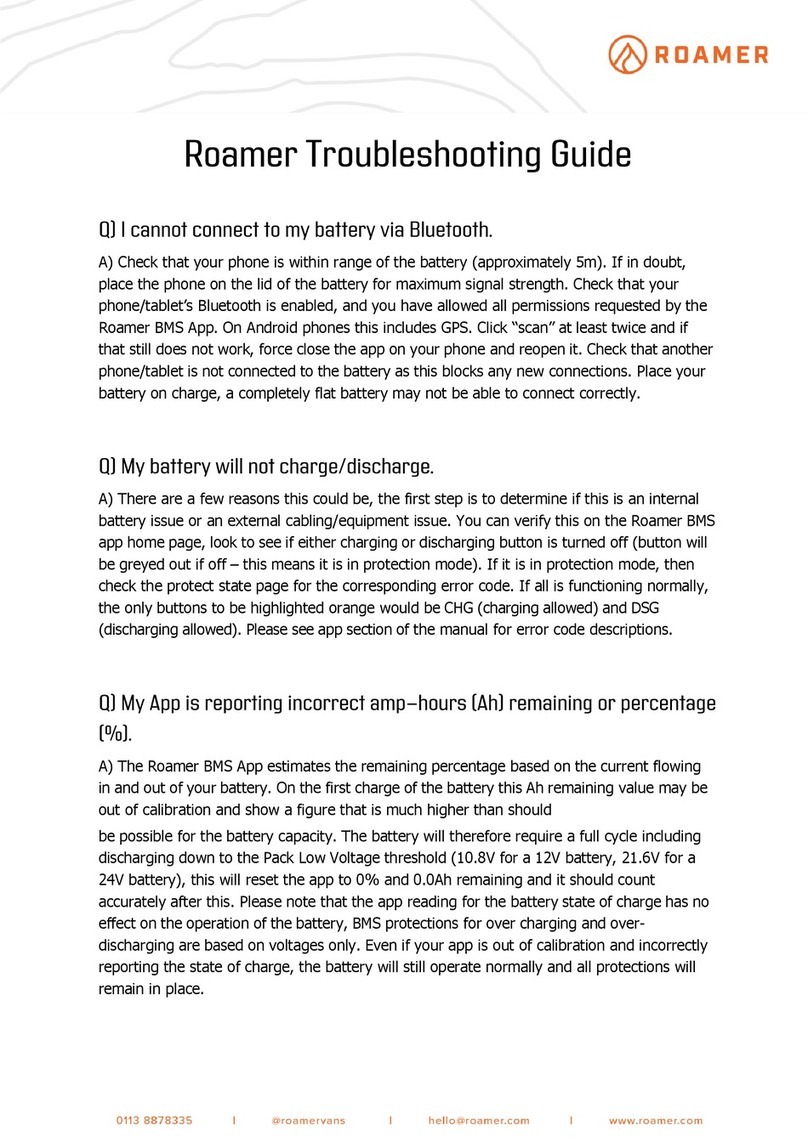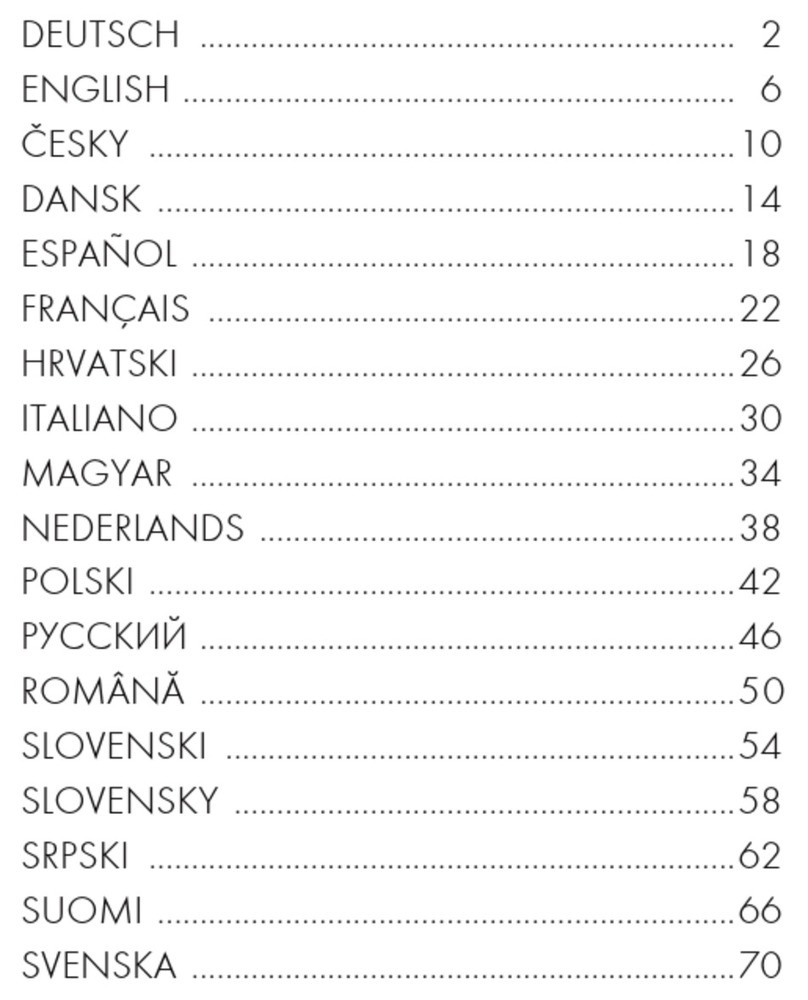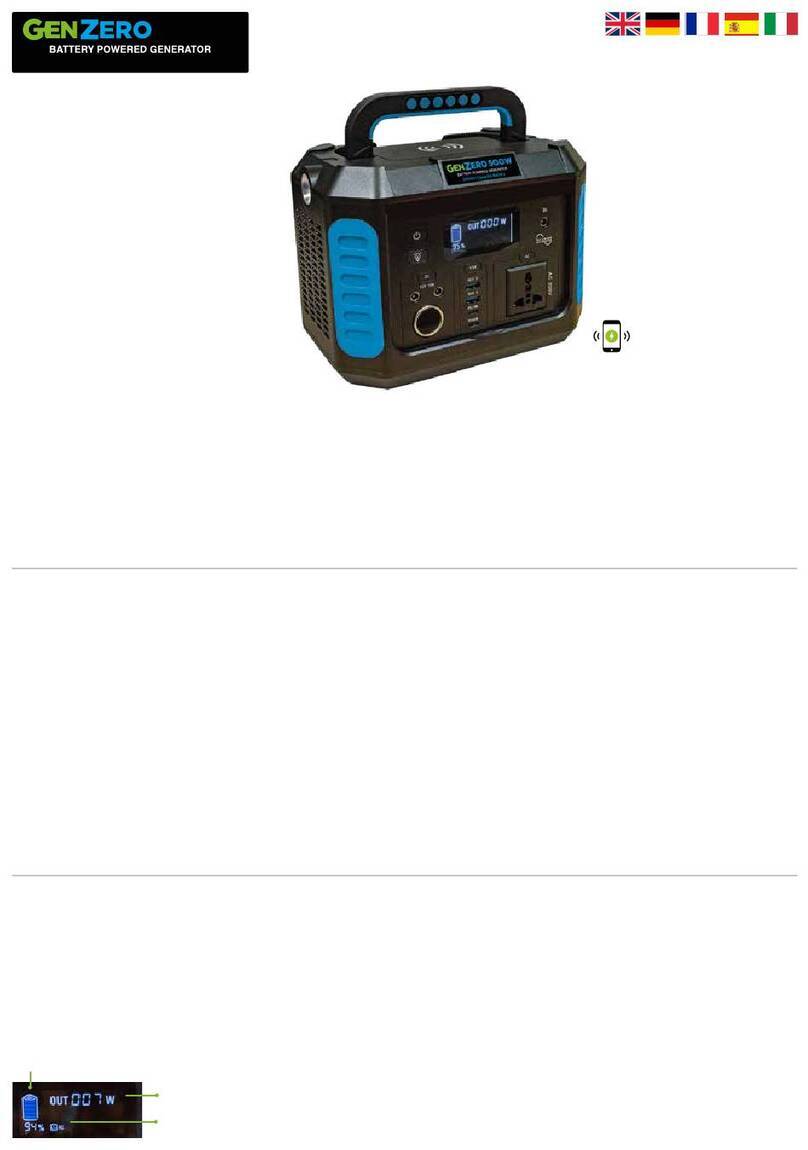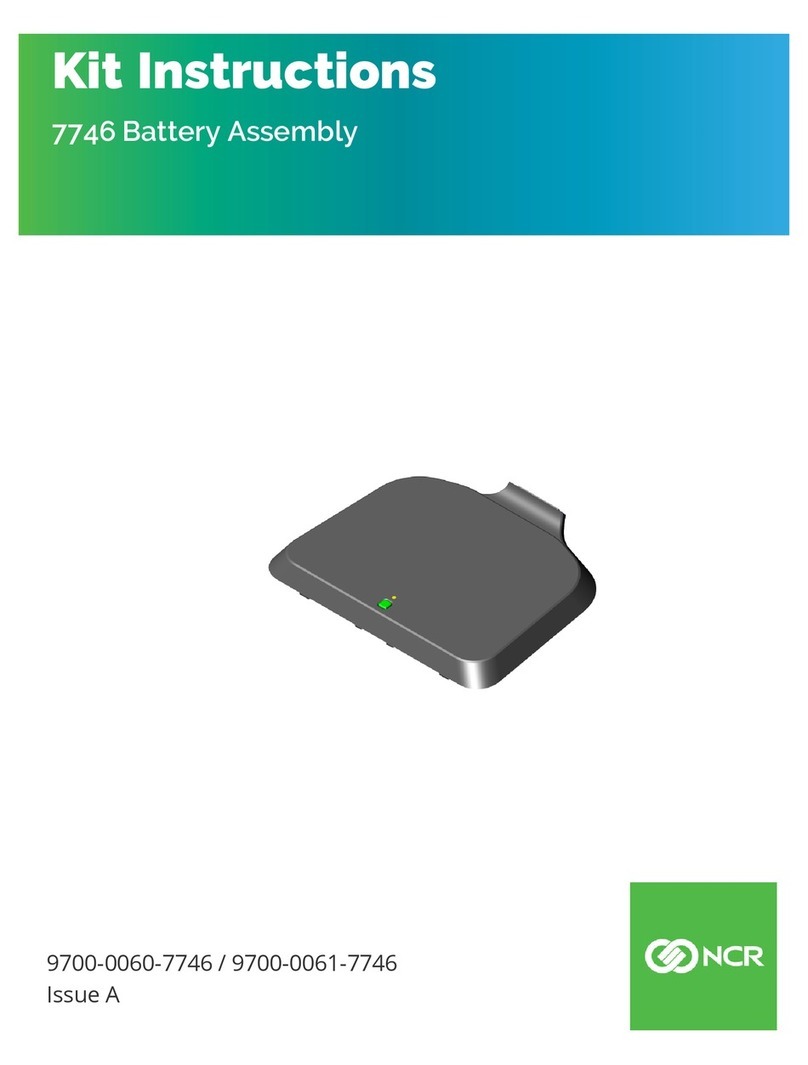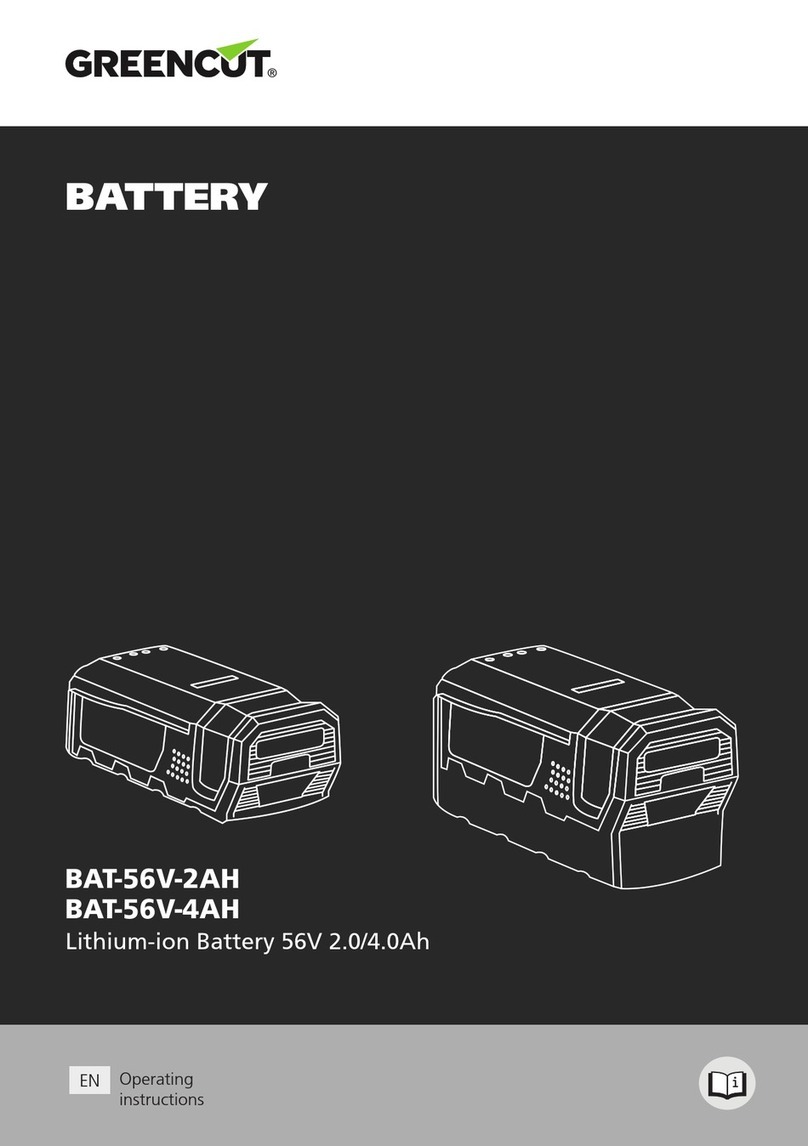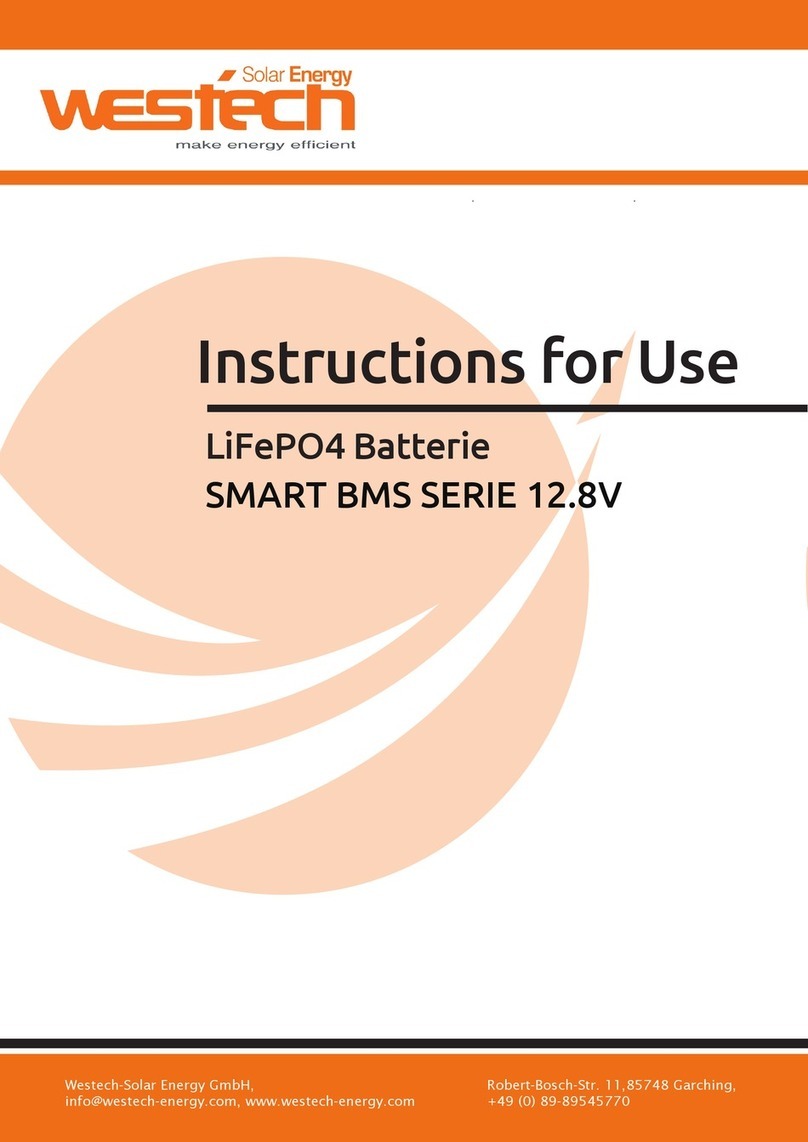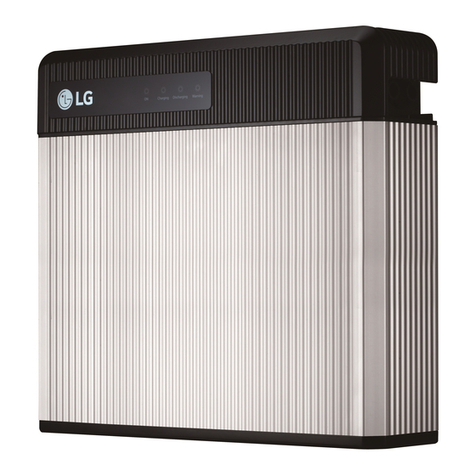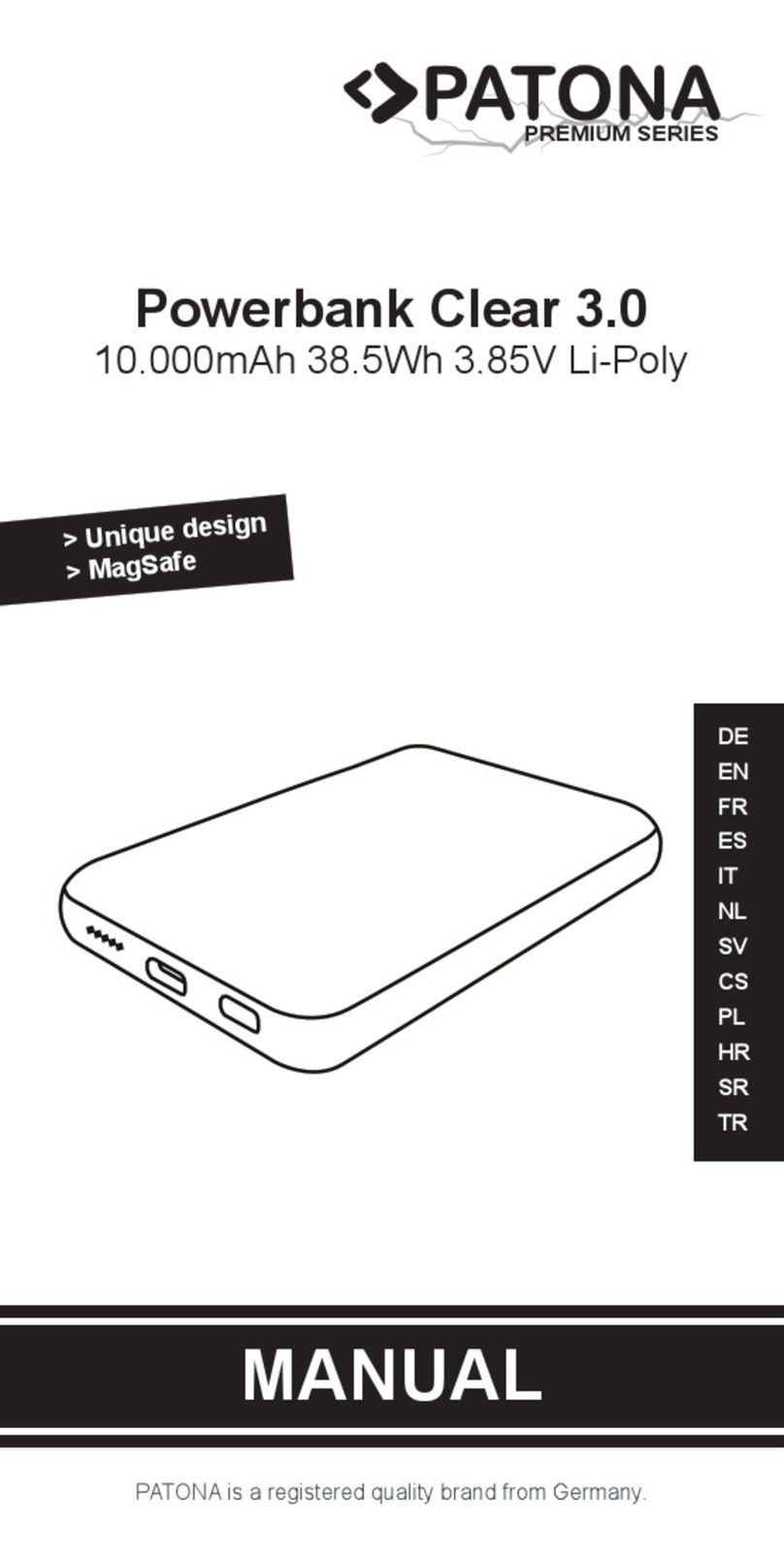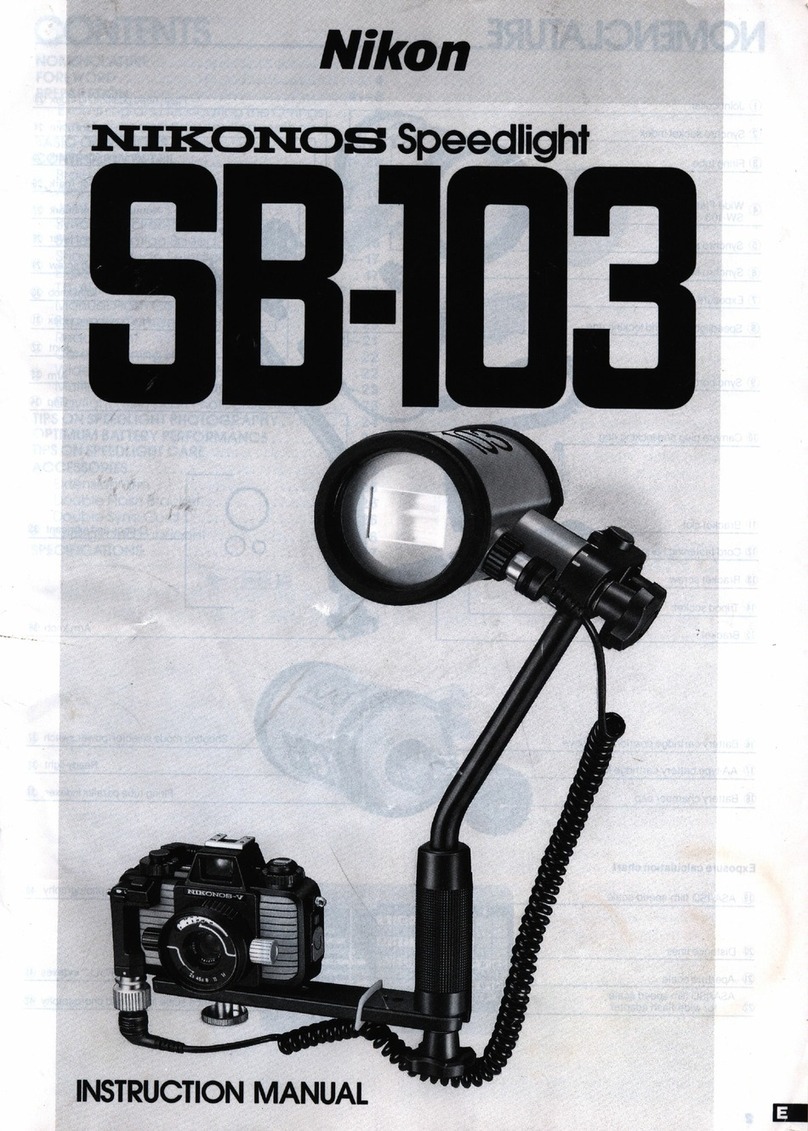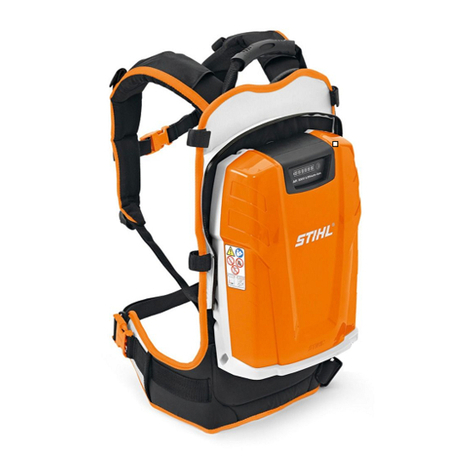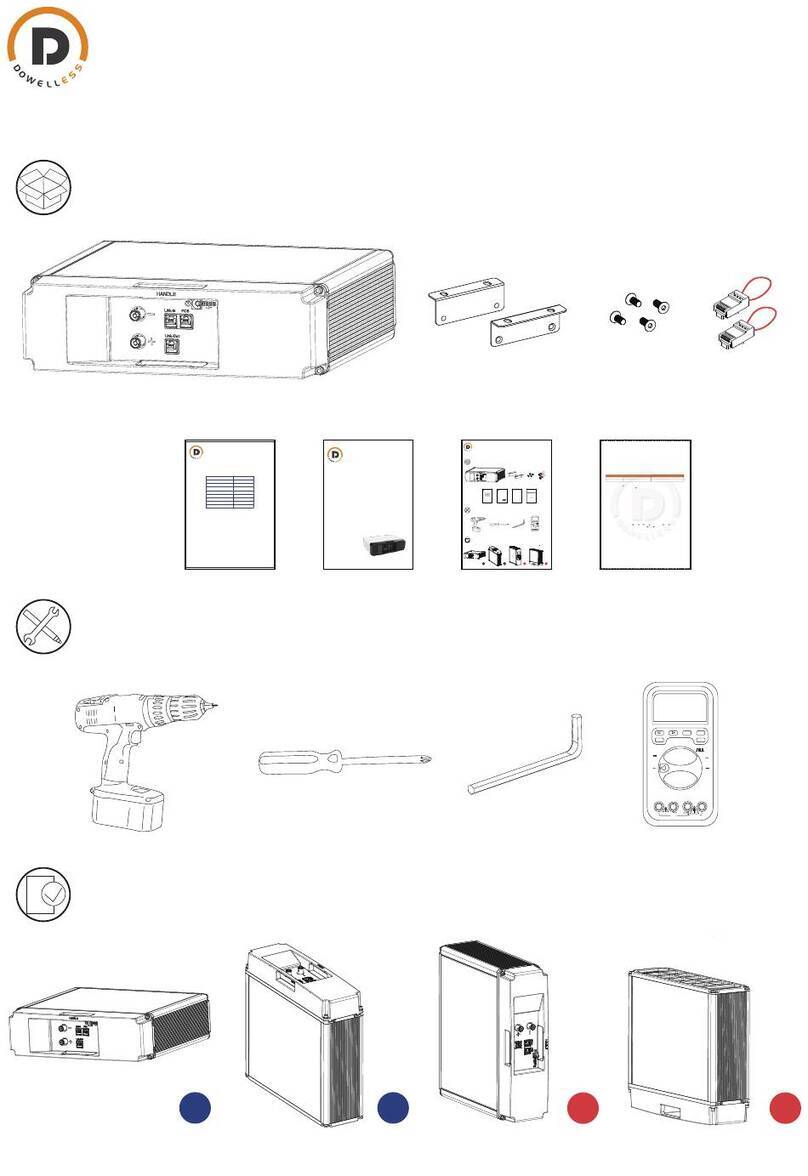TQ HPR Battery V02 250 Wh User manual

HPR Battery V02 250 Wh
User Manual
EN

EN – 2
1 Safety
These instruction contains information that you must observe for
your personal safety and to prevent personal injury and damage
to property. They are highlighted by warning triangles and shown
below according to the degree of danger.
►Read the instructions completely before start-up and use. This will help
you to avoid hazards and errors.
►Keep the manual for future reference. This user manual is an integral part
of the product and must be handed over to third parties in case of resale.
NOTE
Also observe the additional documentation for the other components of the
HPR50 drive system as well as the documentation enclosed with the e-bike.
1.1 Hazard classification
DANGER
The signal word indicates a danger with a high degree of risk which will
result in death or serious injury if not avoided.
WARNING
The signal word indicates a danger with a medium level of risk which will
result in death or serious injury if not avoided.
CAUTION
The signal word indicates a danger with a low level of risk which could
result in a minor or moderate injury if not avoided.
NOTE
A note in the sense of this instruction is important information about the
product or the respective part of the instruction to which special attention
is to be drawn.

EN – 3
1.2 IMPORTANT SAFETY INSTRUCTIONS
WARNING
When using this product, basic precautions should always be followed,
including the following:
Read all the instructions before using the product.
Do not put fingers or hands into the product.
Liquid may leak from the Battery if used improperly. Avoid any contact
with this liquid. Wash it off with water if you do come into contact with the
liquid. Also seek medical attention if the liquid has come into contact with
your eyes. Liquid leaking from the Battery can cause irritation or burns.
Never subject the Battery to mechanical shocks to prevent damage to the
Battery.
To reduce the risk of injury, close supervision is necessary when the
Battery is used near children.
Never open the Battery case or attempt to disassemble the
Battery.
Do not use this product if the flexible power cord or output cable is
frayed, has broken insulation, or any other signs of damage.
Never break or puncture the Battery.
Only charge the Battery in well ventilated rooms.
Only use the original TQ Charger (FSP235–14S4AC8C) to charge the
Battery.
Use only original HPR Batteries to supply power to the drive system.
This equipment is not intended to be used at ambient temperatures less
than -5 °C (23 °F) or above ambient temperatures of 40 °C (104 °F).
The battery is intended to be charged when the ambient temperature is
between 0 °C (32 °F) and 40 °C (104 °F). Never charge the battery when
ambient temperatures are outside this range.
Do not attempt to modify or repair the product. Check further detail in
Chapter “1.3 Intended Use“.

EN – 4
Only use this product within following temperature limits
Operation: -5 °C to 40 °C / 23 °F to 104 °F
Charging: 0 °C to 40 °C / 32 °F to 104 °F
Storage: 0 °C to 40 °C / 32 °F to 104 °F
Recommended storage: 10 °C to 20 °C / 50 °F to 68 °F
1.2.1 INSTRUCTIONS PERTAINING TO RISK OF FIRE
Explosion and fire hazard with damaged Battery housing
• If the Battery housing is damaged, make sure to have it replaced by a
TQ authorised bicycle dealer, even if the Battery is still functional.
• Do not make any repair attempts under any circumstances.
Explosion and fire hazard when short-circuiting the Battery terminals
• Keep the Battery away from metallic objects as there is a risk of
short circuits. Do not allow nails, screws or other small, sharp and/
or metallic objects to come into contact with the Battery (charging/
discharging socket).
Risk of explosion and fire in case of high heat, fire or contact with water
Protect the battery from fire, high heat and also from extended direct
exposure to sunlight.
• Never immerse the battery in water.
Danger of poisoning by gases from a smoking or burning Battery in case
of damaged Battery or improper use.
• Be careful not to breathe in the highly toxic gases from a smoking or
burning Battery.
• Ensure good ventilation and consult a doctor if you notice any unde-
sirable effects on the respiratory organs. The vapors may irritate the
respiratory organs.
1.2.2 INSTRUCTIONS PERTAINING TO ELECTRIC SHOCK
The Electric risk and shock is only applicable for the TQ Charger
(FSP235–14S4AC8C). Please check and read all safety instruction which
are included in the Charger manual.
SAVE THESE INSTRUCTIONS

EN – 5
1.3 Intended Use
The HPR Battery V02 is intended exclusively for supplying power to the
HPR50 drive system and must not be used for any other purpose.
Any other use or use that goes beyond this is considered improper and
will result in the loss of the warranty. In case of non-intended use, TQ-Sys-
tems GmbH assumes no liability for any damage that may occur and no
warranty for proper and functional operation of the product.
Intended use also includes observing these instructions and all the infor-
mation contained therein as well as the information on intended use in the
supplementary documents enclosed with the e-bike.
Faultless and safe operation of the product requires proper transport,
storage, installation and operation.
2 Technical data
Nominal voltage 50.4 V
Nominal capacity 4.9 Ah
Nominal energy 360 Wh
Dimensions 39 mm x 63.5 mm x 420 mm /
1.53” x 2.5” x 16.53”
Charging temperature
Operating temperature
Storage temperature
Recommended storage
temperature
0 °C to 40 °C / 32 °F to 104 °F
-5 °C to 40 °C / 23 °F to 104 °F
0 °C to 40 °C / 32 °F to 104 °F
10 °C to 20 °C / 50 °F to 68 °F
Weight approx. 1350 g / 2.98 lbs
Tab. 1: Technical data – HPR Battery V02

EN – 6
3 OPERATION
3.1 Battery charging
DANGER
►Only use TQ Charger (FSP235–14S4AC8C) for charging the Battery.
WARNING
Fire or electric shock hazard due to damage to Battery, Range Extender,
charger, cable and plug
►Never charge the Battery if you notice any damage to the Battery, Range
Extender, charger, cables or connectors.
►Only perform the charging process in a place where there are no flam-
mable materials in surrounding.
►Never leave the charging process unattended.
►Do not attempt to modify or repair the product. Check further detail in
Chapter “1.3 Intended Use“.
►Only use this product within following temperature limits:
Operation: -5 °C to 40 °C / 23 °F to 104 °F
Charging: 0 °C to 40 °C / 32 °F to 104 °F
Storage: 0 °C to 40 °C / 32 °F to 104 °F
Recommended storage: 10 °C to 20 °C / 50 °F to 68 °F
►Further safety warnings regarding Risk of Fire, Electric Shock or Injury to
persons can be found in the section: “1.2 Important Safety Instructions“.

EN – 7
NOTE
You can charge the Battery either directly with the charger or via the
optional Range Extender. For more information, refer to the corresponding
user manuals for the charger and the Range Extender.
►Connect the charger to the power
supply.
►Unfold the cover (pos. 1 in Fig. 1) on
the charging port (pos. 2 in Fig. 1) in
the bike frame.
►Check that the contacts in the
charging port are free of dirt and
clean them if necessary.
►Align the charging plug (pos. 3
in Fig. 1) of the charger or Range
Extender so that the plug codes of
the charging plug and charging port
match (see Fig. 1).
►Insert the charging plug (pos. 3 in
Fig. 1) of the charger or Range Extender into the charging port.
►Pull the charging plug out of the charging port when charging is
complete.
►Close the cover on the charging port when charging is complete and
disconnect the charger from the power supply.
Fig. 1: Battery charging
1
2
3

EN – 8
3.2 Note on Charging
NOTE
The temperature of the Battery must be within the permissible charging
temperature range (0 °C to 40 °C / 32 °F to 104 °F). Otherwise the charging
process will not be started.
—The drive system is deactivated during the charging process.
—The state of charge of the Battery can be read on the Display.
—The state of charge of the Range Extender can be read on the Display and
on the 5 LEDs on the side of the Range Extender.
—New batteries have a charge level of 20 % to 30 % due to transportation
regulations and must be recharged within less than 6 months of manufac-
ture.
—The Battery should be recharged immediately after complete discharge
(state of charge <5 %).
—1 charge cycle can consist of a full charge of the Battery capacity (0 %
to 100 %) or several partial charges that add up to 100 % of the charge
capacity.
—The Battery capacity should be at least 60 % after 500 charging cycles.
—Derating: In case the Battery capacity gets almost empty (approx. <10 %)
during riding the sytems switches automatically to mode I.
4 TRANSPORT
—The transport of lithium batteries is subject to country-specific laws and
regulations. Inform yourself about the respective regional regulations and
observe them during transport.
—For transport observe the special requirements for packaging and labeling
that apply in your country.
—Contact a TQ authorized bicycle dealer for information on transporting the
Battery and suitable transport packaging. For transport outside the bicycle
frame, we recommend a certified transport box.

EN – 9
5 STORAGE
—It’s recommended to store the Battery at room temperature (approx. 10 °C
to 20 °C / 50 °F to 68 °F ) and do not expose it to direct sunlight.
—Do not store the Battery near heat sources or other easily flammable
materials.
—Store the Battery in dry rooms (humidity below 70 %) and protect it from
rain and moisture.
—Store the Battery only in rooms equipped with smoke detectors.
—Charge the Battery to approx. 30 % to 60 % before storage.
—Check the Battery every 6 months and recharge it to approximately 30 %
to 60 %.
—Fully charge the Battery before use.
—Do not store the Battery with the charger plugged in.
6 USER MAINTENANCE
6.1 Maintenance and Service
All service, repair or maintenance work performed by a TQ authorized bicycle
dealer. Your bicycle dealer can also help you with questions about bicycle use,
service, repair or maintenance.
6.2 Cleaning
—Never immerse the Battery in water to clean it.
—Never clean the Battery with a water jet.
—Only clean the Battery with a soft, damp cloth.
—Please contact a TQ authorised bicycle dealer, if the Battery is no longer
functional.

EN – 10
7 Environmentally friendly disposal
The components of the drive system and the batteries must not be
disposed of in the residual waste garbage can.
—Dispose of metal and plastic components in accordance with
country-specific regulations.
—Dispose of electrical components in accordance with country-specific
regulations. In EU countries, for example, observe the national imple-
mentations of the Waste Electrical and Electronic Equipment Directive
2012/19/EU (WEEE).
—Dispose of batteries and rechargeable batteries in accordance with the
country-specific regulations. In EU countries, for example, observe the
national implementations of the Waste Battery Directive 2006/66/EC in
conjunction with Directives 2008/68/EC and (EU) 2020/1833.
—Observe addtitonally the regulations and laws of your country for disposal.
In addition you can return components of the drive system that are no longer
required to a bicycle dealer authorized by TQ.

EN – 11

NOTE
For more information and TQ product manuals in various language, please
visit www.tq-ebike.com/en/support/manuals or scan this QR-Code.
We have checked the contents of this publication for conformity with the product
described. However, deviations cannot be ruled out so that we cannot accept any
liability for complete conformity and correctness.
The information in this publication is reviewed regularly and any necessary corrections
are included in subsequent editions.
All trademarks mentioned in this manual are the property of their respective owners.
Copyright © TQ-Systems GmbH
TQ-Systems GmbH | TQ-E-Mobility Art.-No.: HPR50-BAT02-UM
Gut Delling l Mühlstraße 2 l 82229 Seefeld l Germany Rev0200 2023/09
Tel.: +49 8153 9308–0
ebike@tq-group.com l www.tq-ebike.com
Table of contents


